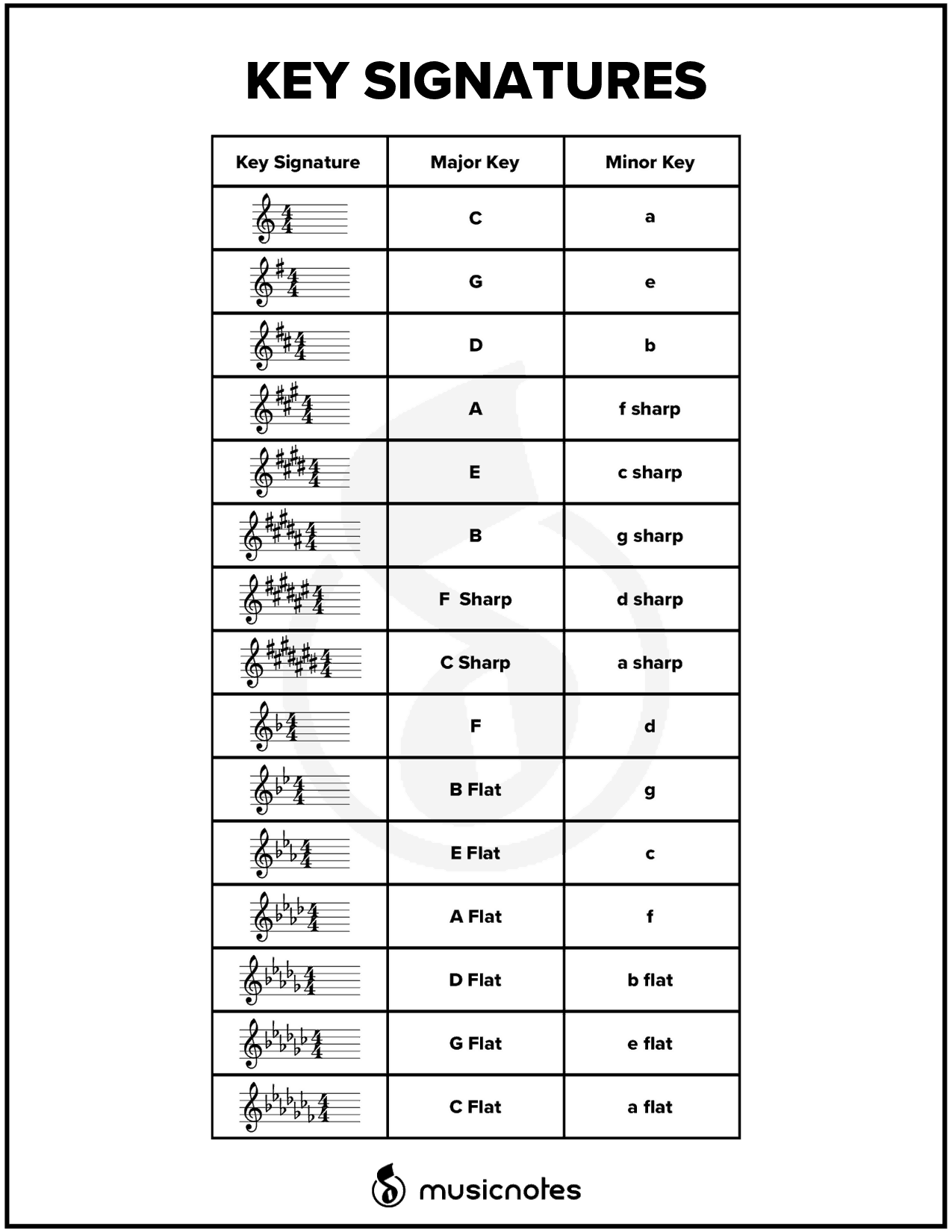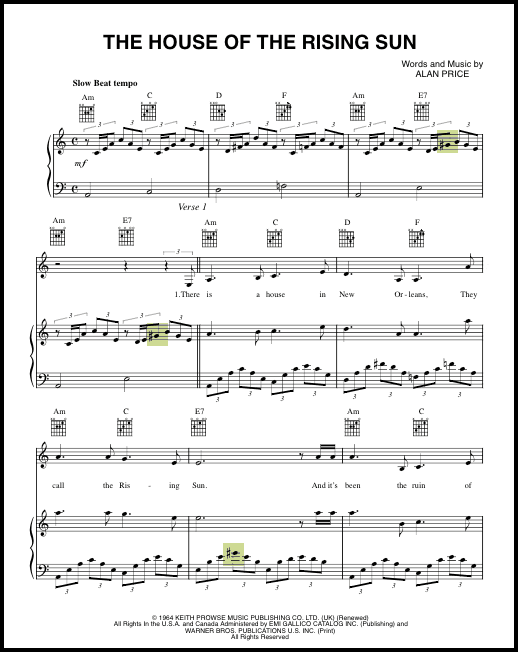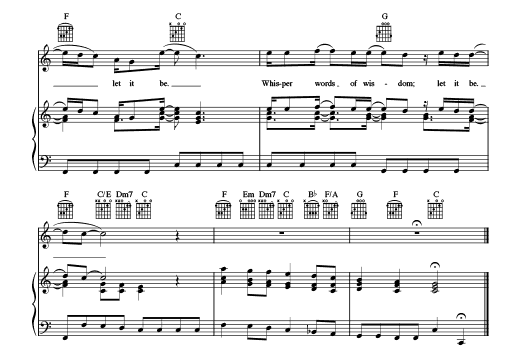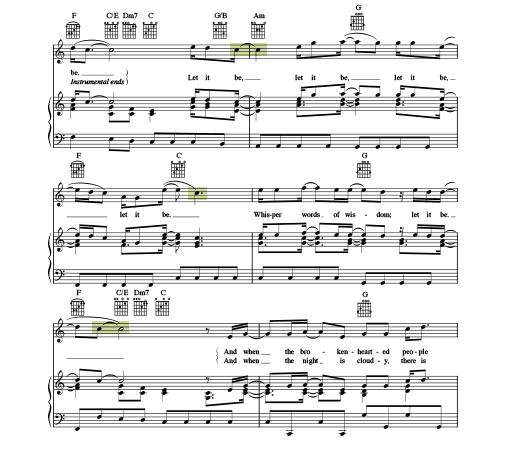4 Ways to Identify Major and Minor Keys
Here are four methods to help you figure out if you're in a major or minor key!

In music, relative keys are the major and minor keys that share the same key signature. For example, G Major and E Minor are relative keys because they both share a key signature of one sharp. Every key signature has a corresponding major and minor key. Check out the chart below to look at the entire list!

Looking at the definition of relative keys often prompts the question: How can you tell if you’re in a major or minor key? We’re going to give you four methods you can use to figure it out!
Method #1: Listen
Even if you’re struggling to determine the key of a song, you can likely still recognize the difference between major and minor chords. Listen to the example below as it alternates back and forth between a C Major chord and a C Minor chord.

When you’re listening to a piece of music, if the song sounds bright or happy and uses primarily major chords, you’re probably in a major key. Conversely, if the song sounds dark or gloomy and uses primarily minor chords, you’re probably in a minor key.
It’s worth noting that most popular music is written in major keys.
Listen to “The House of the Rising Sun” by The Animals in A Minor and listen to the minor chords at the beginning and end of every phrase.
Because relative keys share all of the same chords, it can be very tricky to determine whether a song is major or minor. Identifying the key by listening alone can take years of practice and ear training. Luckily, we have a few visual methods as well!
Method #2: Look for Accidentals
In harmonic minor scales, the seventh scale degree is raised.

This raised seventh almost always shows up in minor keys. Let’s go back to “The House of the Rising Sun” and take a look at the sheet music.
Notice that there are multiple accidentals in the music, which is a strong indicator that we’re in a minor key. Most importantly, we see a G Sharp popping up regularly (highlighted in green), which indicates the raised seventh in a minor key signature.

Method #3: Find the Tonic
The tonic is the note which a song’s key and scale are built on. For example, in a C Major song, the tonic is C. Likewise, the tonic chord is the chord built on the tonic note. In C Major, the tonic chord is a C Major chord. If you can find the tonic note, you’ll be able to determine the key right away! Here are some clues that will help you:
- The tonic note or chord will be prominent in the melody.
- The song will likely END on the tonic chord.
- You could stop on the tonic chord, and the song would sound complete.
- Humming the tonic note while the song plays will sound pretty good throughout the whole piece.
Let’s use the popular Beatles tune “Let it Be,” to dissect this method. First, let’s look at the very end of the song. We know from our key signature of no sharps or flats that the song is either in C Major or A Minor.

As we mentioned before, most songs will end on the tonic. In this case, the piece ends on a C Major chord. It would be safe to bet that the song is in C Major, but let’s confirm by looking at the chorus and seeing if how often a “C” shows up.

Though we do see an A Minor chord in the chorus, notice how each the melody generally ends on a C, while the phrases end on C Major chords.
Finally, let’s listen to the song and hum a “C.” Click the play button below for a reference pitch.
You’re probably pretty confident at this point that the tonic is indeed “C.” We can now conclude that the song is in C Major, rather than A Minor.
Method #4: Analyze the Chord Progression
Finally, the last method for determining whether you’re in a major or minor key is to look closely at the chord progression. Let’s look at the chords in the beginning of “Let it Be.”

If we analyze this progression with Roman numerals in the key of C Major, we would see:

In the key of A Minor, we would see:

We can see by looking at the Roman numeral analysis in C Major that it makes far more sense than the analysis in A Minor. It’s not likely that you’ll see a chord progression that switches back and forth between three and seven chords!
And there you have it! Try out these four methods the next time you get stuck on determining the key of a song. The more you go through the process, the quicker you’ll get, and in no time at all, you’ll be a pro!

